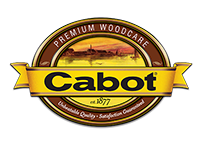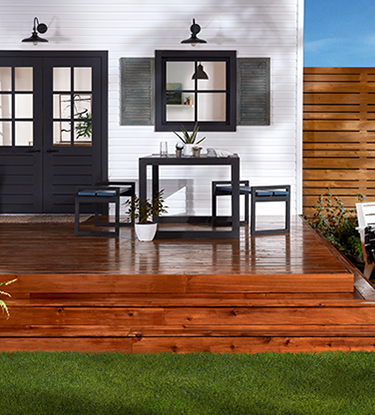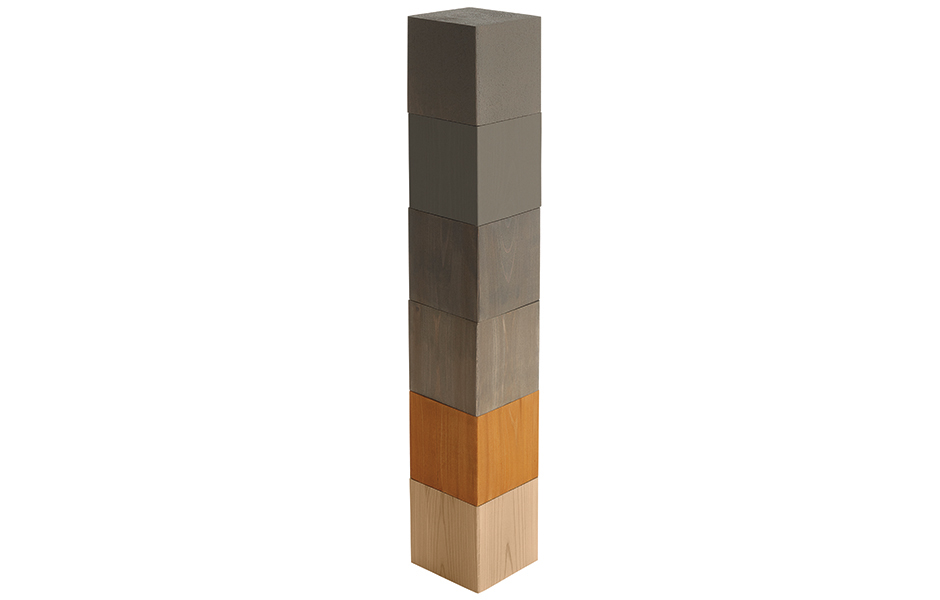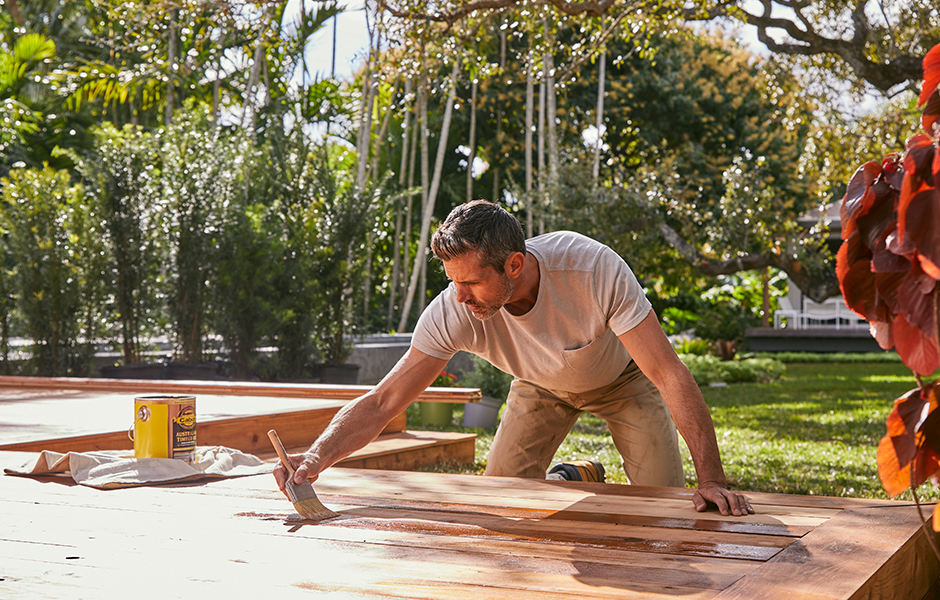
STAINING YOUR DECK
Decks are a great place to relax and entertain—they really are like outdoor rooms. But, because decks are exposed to the elements, as well as a lot of foot traffic, they require maintenance to keep them protected. Properly staining your deck can help maintain its beauty through years of barbecues.
These easy-to-follow simple steps will help you learn how to stain deck and avoid deck problems and get professional-looking results you’ll be proud of.
PREPARE THE DECK SURFACE
Before staining your deck, be sure the wood is dry and free of contaminants. Stain that’s applied to damp surfaces won’t adhere well and can crack or peel.
- Clean wood is important, too—the surface should be free of mildew stains, dirt, debris and contaminants.
- To clean and prep the deck for staining, wash it with Cabot® Problem Solver™ Wood Cleaner, rinse with clean water and let it dry for two to three days. For more information about prepping your deck, read our article The Basics of Exterior Staining Prep.
A FEW TIPS BEFORE YOU GET STARTED STAINING YOUR DECK
- Apply stain when air and wood surface temperatures are between 50°—90°F. Avoid applying in direct sunlight.
- Don’t apply stain if rain is in the forecast over the next 12—24 hours.
- Test a small area first and let it dry to make sure you’re pleased with the result.
- If you’re covering a large area and using multiple gallons, mix them together to ensure color consistency.
Wood Toned & Clear Stain—These clear and lightly tinted stains are nearly transparent, so they allow the most wood grain and texture to show through. View wood-toned & clear stain colors.
Semi-Transparent—Lightly pigmented, these stains impart more color the surface than wood toner stains, while still letting the wood grain to be seen. View semi-transparent colors.
Semi-Solids—Our unique semi-solid/semi-opaque finish masks most of the wood grain, but allows some of the wood texture to be seen. View semi-solid colors.
Solids—Choose these stains if you want a rich, vibrant opaque finish that completely hides the wood grain while allowing very little of the wood texture to show through. View solid colors.
Start by heavily coating the open end-grain of the boards. Then brush 2—3 boards at a time, from one end to the other in long, smooth strokes.
To avoid “lap marks” make sure that the leading edge is kept wet and that wet stain is brushed into wet stain.
On new decks, apply only one coat of oil-based deck finishes.
For composite decking—that’s decking made from recycled plastic materials and wood—follow the manufacturer’s recommendations.
Keep in mind more stain is not better. If you over-apply, stain may peel or crack when exposed to moisture, or produce a sticky surface which can prevent it from drying properly.
MAINTAIN YOUR STAIN
Remember, decks take a lot of abuse so you’ll need to reapply stain from time to time. Not sure whether it’s time to reapply stain? Here’s a rule of thumb: if the stain is still repelling water, it's still performing. You may just need to clean the deck this season.


